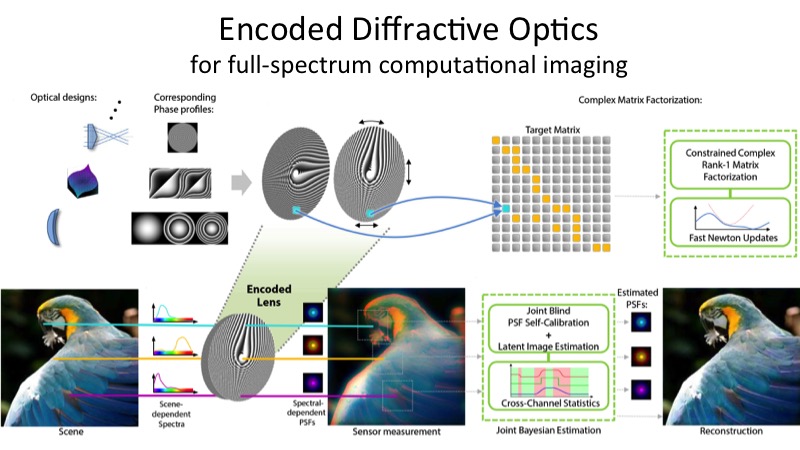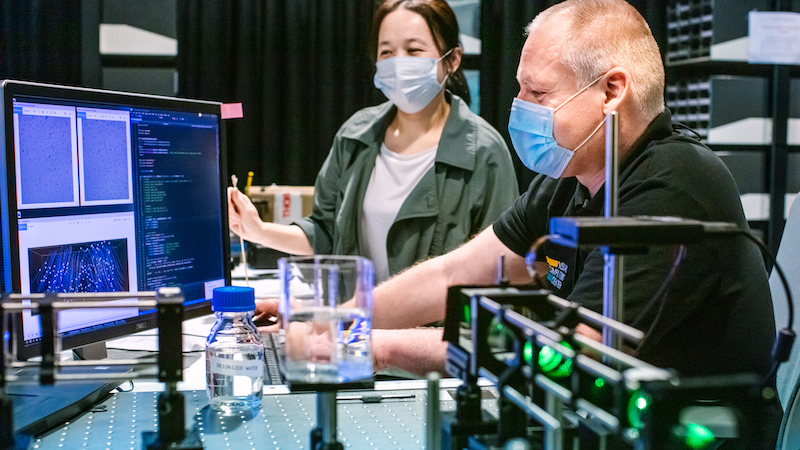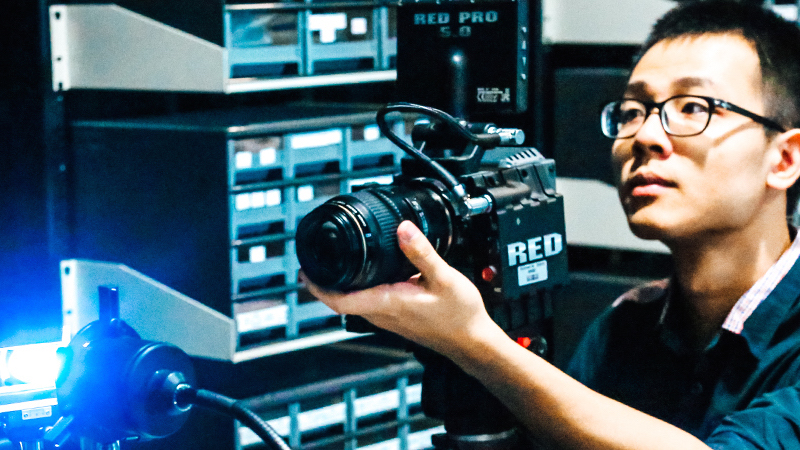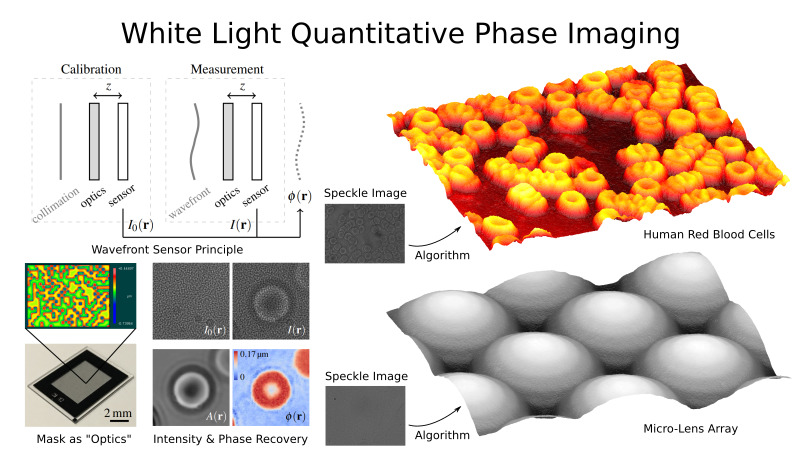Computational Imaging Group
at the KAUST Visual Computing Center
Overview
Our research focus is Computational Imaging and Display, an emerging research area within Visual Computing, which combines methods from Computer Graphics, Machine Vision, Imaging, Inverse methods, Optics and perception to develop new sensing and display technologies. The key theme in our group is hardware-software co-design of the optics, electronics, and algorithms to obtain imaging systems with unprecedented performance.
Computational Imaging aims to develop new cameras and imaging modalities that optically encode information about the real world in such a way that it can be captured by image sensors. The resulting images represent detailed information such as scene geometry, motion of solids and liquids, multi-spectral information, or high contrast (high dynamic range), which can then be computationally decoded using inverse methods, machine learning, and numerical optimization.
Computational Displays use a similar approach, but in reverse. Here, the goal is to computationally encode a target image that is then optically decoded by the display hardware for presentation to a human observer. Computational displays are capable of generating glasses-free 3D displays, high dynamic range imagery, or images and videos with spatial and/or temporal super-resolution.






